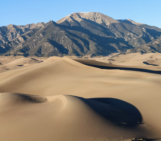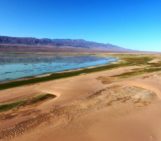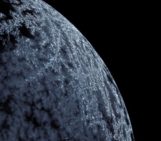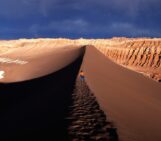
Rock salt stalactites (Speleothems) are the indicators of entrance in a salt cave. These crystal stalactites precipitate from brine only at the entrance in the salt caves, as that is the only place where the physical and chemical properties of the air and the brine dripping from the ceiling allow these crystals to grow and be preserved. And they are extremely fragile – if there is just a small change in the brine’s chemistry or the air’s moisture, the crystals will vanish away, dissolved in a pool of brine or a stream of salt water flowing out of the cave. These stalactites of salt crystals are what we call secondary salt; that means the original salt (formed million years ago) dissolved in water and re-precipitated recently.
Yes, you heard right, the sediments that contain these caves are made of rock-salt in the ground. Actually, caves can be formed in various types of soluble materials, from limestone and gypsum to halite (rock salt) or even ice. The salt caves denote the presence of salt near the surface of the earth.
How does the salt get there? Well we do know that there have been moments in the history of the Earth when certain seas (salt giants) have accumulated enormous deposits of salt instead of the more familiar mud sediments. However, we still don’t completely understand the process. That is also due to the fact that, unlike other rocks, salt has a plastic behavior, it tends to ‘flow’ upwards through other rocks, towards the surface (pretty much like wet sand between your feet when at seaside). As salt squeezes its way up, it deforms the rocks around it and creates salt domes that are later dissolved by water. This dynamic behavior of salt means that there are very few places where we can find salt in its original location and the understanding of the natural mechanisms that form salt remains incomplete.
Earth scientists like me, try to understand the mechanism of salt formation. Because the big picture of the past environments where salt is formed is currently blurred, we try to recreate a ‘movie’ of the past, that starts long before the formation of salts and ends long after. In this ‘movie’ we look at the past geography (paleogeography) and past environment (paleoenvironmental) changes from before to after the formation of the salts in order to single out key patterns that can bring us closer to removing the blur from this interesting episode in the story of oceans and seas.
I took this photo while doing field work in eastern Romania. The photo was taken on a tributary of the ‘Slănicul de Buzău’ river in the Buzău Land Geopark, an area of outstanding geological beauty, in the outer hills of South-East Carpathians. When I was stumbling on the salt caves in the field, I had to put mapping and sample collecting on pause. The layers of rock I was following had disappeared, replaced by a chaotic pile of mud, salt and small rock fragments. All I could do was check these rock fragments scattered in the landscape, try to figure out from where they come from, what layers of rock the salt destroyed and of course, enjoy the geometric beauty of the ephemeral crystals.
By Dan V. Palcu, postdoctoral researcher at the University of São Paulo, Brazil
Imaggeo is the EGU’s online open access geosciences image repository. All geoscientists (and others) can submit their photographs and videos to this repository and, since it is open access, these images can be used for free by scientists for their presentations or publications, by educators and the general public, and some images can even be used freely for commercial purposes. Photographers also retain full rights of use, as Imaggeo images are licensed and distributed by the EGU under a Creative Commons licence. Submit your photos at http://imaggeo.egu.eu/upload/.




